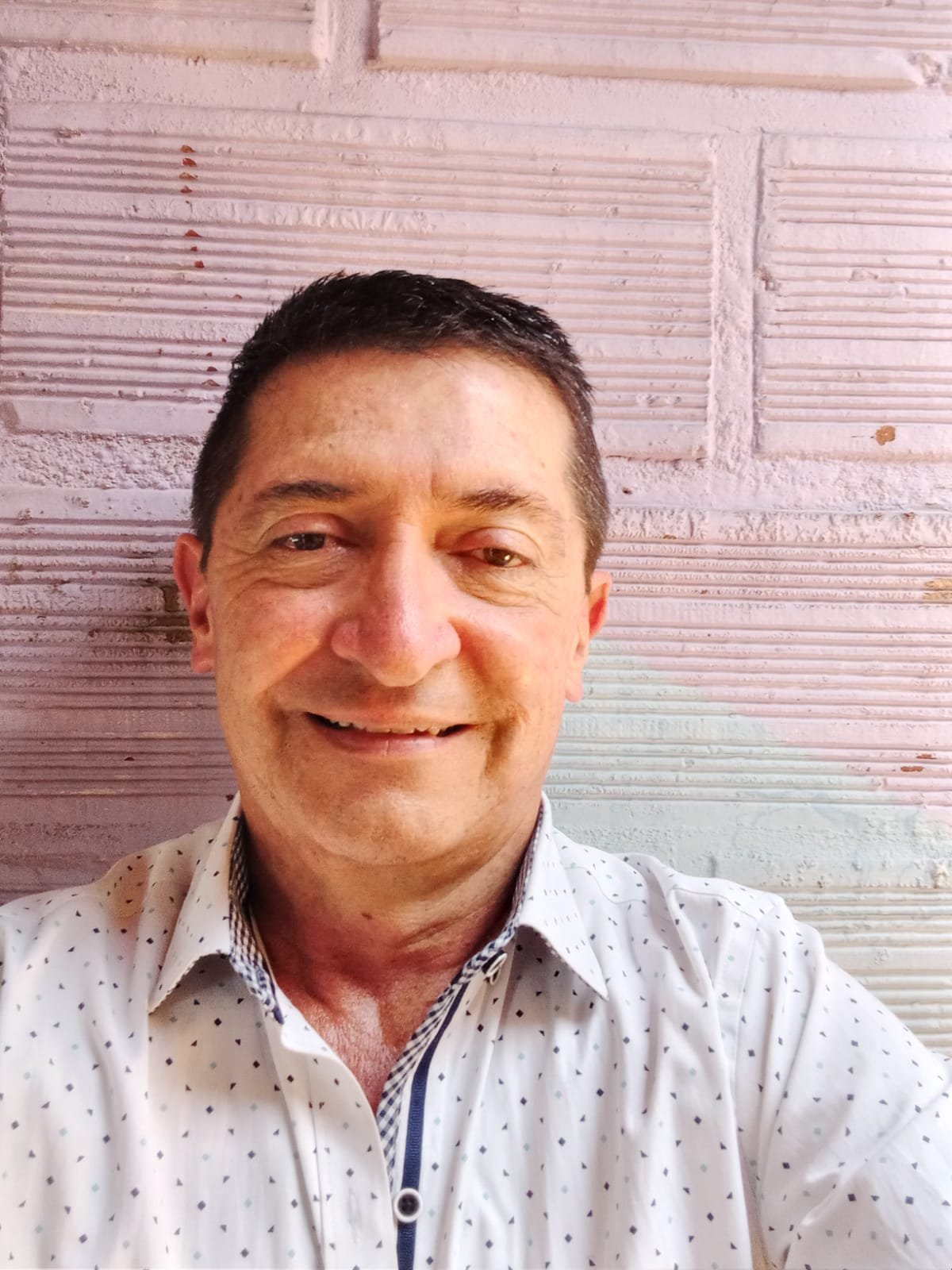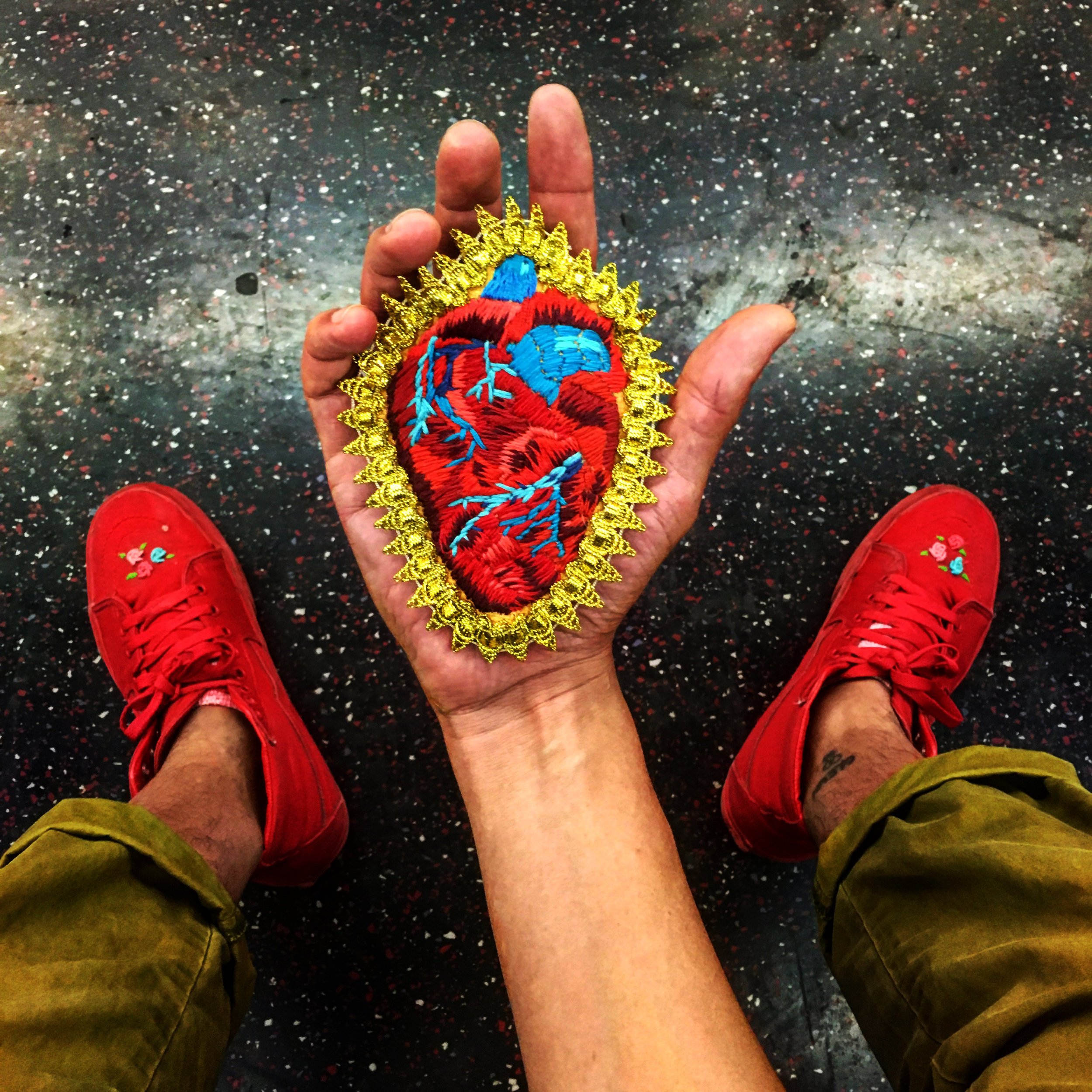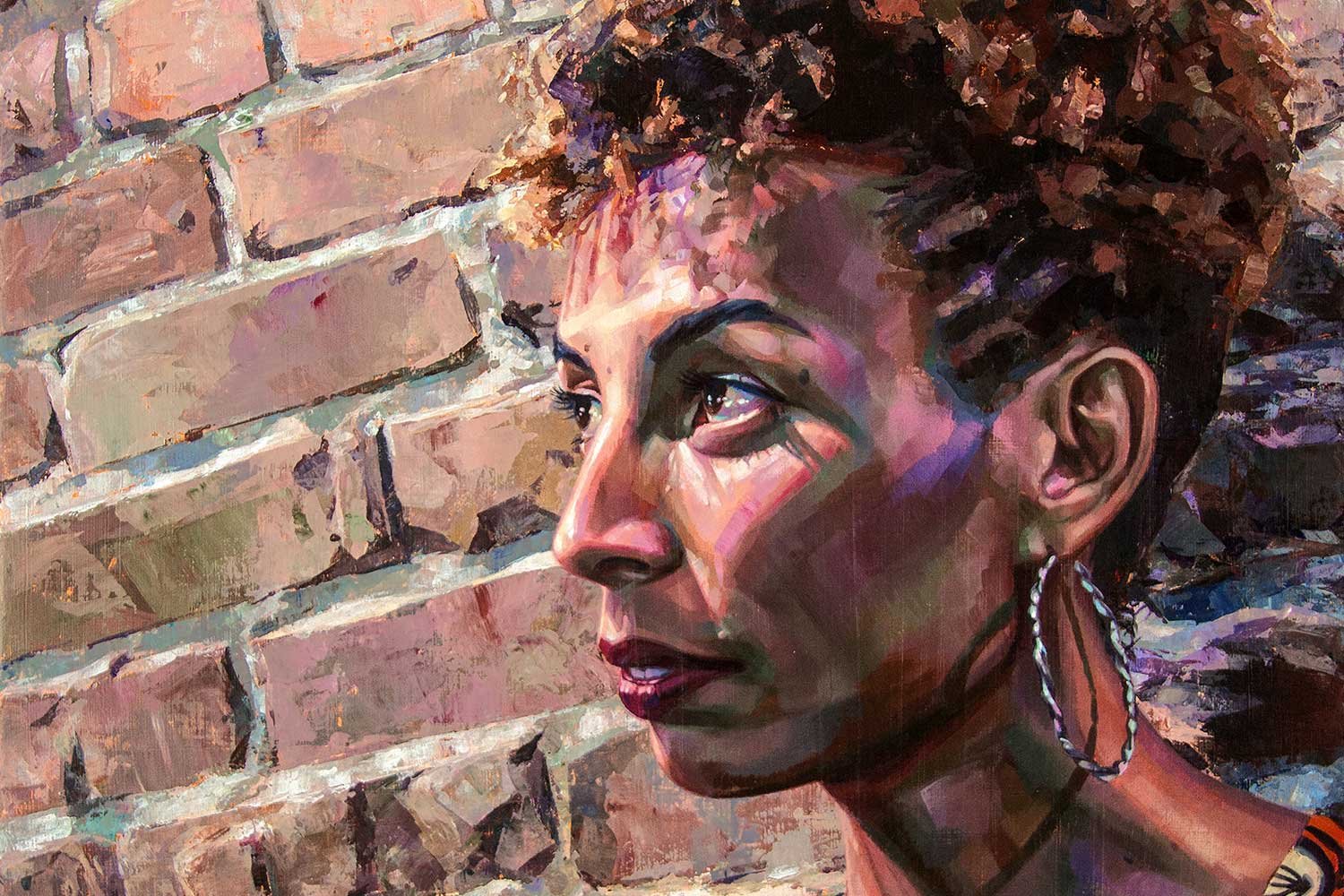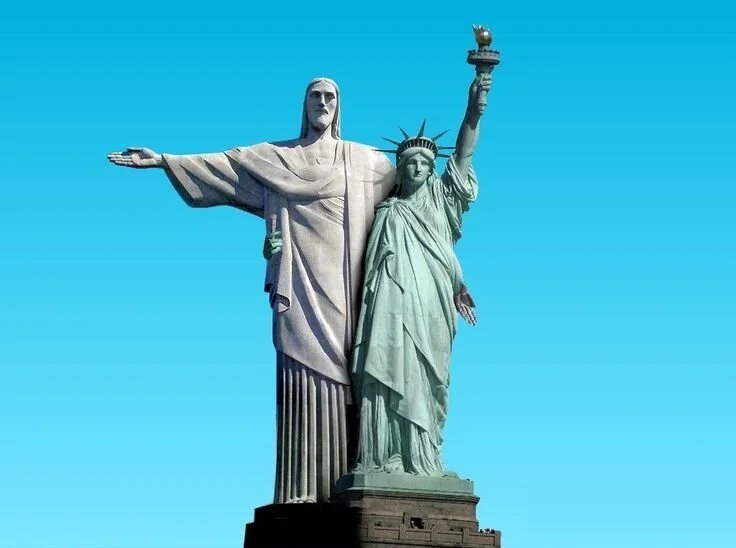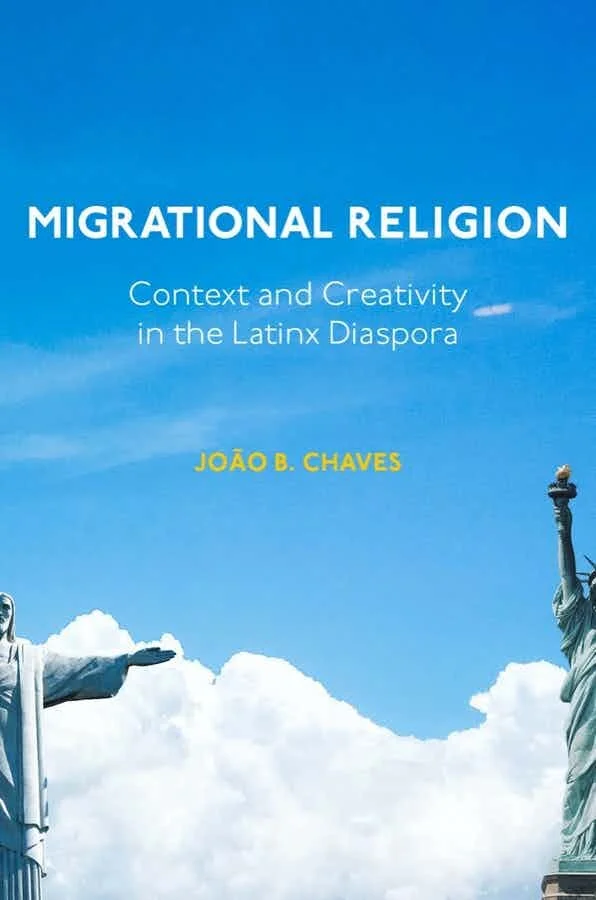Revisión de pura vida
“El Profe” Yonar Brenes Masís entrevista a Hernán Ramírez, al P. Federico Carrasquilla y a Benedito de Queiroz en Medellín, Colombia
“El Profe” Yonar Brenes Masís entrevista a Hernán Ramírez, al P. Federico Carrasquilla y a Benedito de Queiroz en Medellín, Colombia
NOTA EDITORIAL
Yonar Brenes Masís es profesor docente en el Ministerio de Educación Pública de Costa Rica y presentador del podcast El show de Yonar BM. En 2023, asistió–junto con su esposa Francini y su padre Héctor–al Encuentro Continental Fraternidad Secular San Carlos de Foucauld América en Medellín, Colombia como delegado de Las Fraternidades de jóvenes en Costa Rica.
Durante el encuentro, Yonar entrevistó a tres participantes cuyas vidas lo inspiran: Benedito de Queiroz (Profesor de Historia de la Red Pública Estatal en Brasil), Hernán Ramírez (Coordinador Fraternidad Secular Carlos de Foucauld de Colombia) y el Padre Federico Carrasquilla (“Apóstol de los Pobres”). Yonar y su equipo grabaron estas pláticas en el Centro de Formación Los Pomos (adscrito a la Arquidiócesis de Medellín) en diciembre de 2023.
NOTA DEL PROFE
Mi trabajo como profesor es en el área social, histórica y geográfica como docente de Estudios Sociales, pero lo importante es que este trabajo se desenvuelve con población joven y adulta. De ahí es que, por más de ocho años, he trabajado con ellos y aprendido a escuchar, sus historias, sus necesidades y sus experiencias. Este proceso me ha generado la inquietud de poder entrevistar a personas como Hernán, Federico y Benedito para transmitir un pequeño extracto de sus vidas, vidas entregadas en la lucha social–pero ante todo, llevando esperanza y la palabra de Dios hecha ejemplo para entregarla a la gente.
–Yonar BM, enero 2024
NOTA DE ENTREVISTADO
Mi ruta de vida aparece como una cadena de decisiones que son ilógicas, o contraproducentes, o aún que se pudieran calificar como “fracasadas.” De lo contrario, mi ruta de vida se entiende si se mira desde una perspectiva de fe, de persona que me transformó en creyente, que creo en Jesús de Nazaret, que—desde lo pequeño, desde lo local, desde lo privado y en un movimiento de apertura hacia lo público, hacia otras esferas más amplias de la sociedad—va construyendo.
—Hernán Ramírez, enero 2024
Una vida con el desplazado en Colombia
Hernán Ramírez
En esta conversación, he tenido el placer de conversar con Hernán Ramírez (Medellín, Colombia), un hombre que vivió la época más difícil de la historia reciente de Colombia., Además, sigue trabajando por los más desfavorecidos de la actualidad, una labor para aplaudir.
Temas tratados: inicios de Hernán; viviendo en Medellín; problemas sociales en Colombia; grupos disidentes en Colombia
Historia de vida
Padre Federico Carrasquilla
En esta oportunidad, tuve la dicha de conocer y conversar con el Padre Federico Carrasquilla (Medellín, Colombia), un hombre que me ha impactado grandemente por su sencillez y don de amor. Debo agradecer a mi amigo Hernán Ramírez– también de la ciudad de Medellín–por la oportunidad de conocer a "Fede," como lo conocen de cariño. Decir todos los logros de Padre Fede se queda corto—para míi lo más importante es su amor por la gente.
Una vida en el Amazonas
Benedito de Queiroz
En esta conversación, tuve el placer de platicar con con Benedito de Queiroz (Macapá, Brasil), un hombre entregado a su tierra. Su amor por la naturaleza es completo. Les invito a hacer conciencia de la importancia de cada día proteger y defender nuestro medio ambiente. Todos podemos dar un aporte a mejorar el presente y el futuro.
St. Everyday (Part II): Mais Viva!
Dr. Xochitl Alvizo and students ‘heart’ Gabriel García Román’s visit to their Queer Theory class
Dr. Xochitl Alvizo and students ‘heart’ Gabriel García Román’s visit to their Queer Theory class
When I was first introduced to the work of Gabriel García Román’s work, specifically the Queer Icons portrait series, I noted the immediate connection between his art and the subjects I teach in my Queer Studies and Religious Studies classrooms at California State University, Northridge.
The intersection of religious studies/theology and queer theory is always a little surprising to my students. For them, issues of gender, sex, and sexuality are very fixed ideas in relation to religion, and they do not expect much new information on the topic – much less positive or constructive perspectives. As I see it, though, part of my job in the classroom is precisely to complexify and bring out the many dimensions inherent to the subject and to move students from their assumed, inherited, and usually uncritical perspectives to a more nuanced and complex understanding of religion and sex, gender, and sexuality. I therefore have my students engage work that scholars, religious leaders, and activists are producing in these areas, often born out of social-justice commitments.
Left to right: Rev. Freda (n.d.) and Fei Hernandez (2018). From the Queer Icons series by Gabriel García Román.
The impact of Gabriel’s Queer Icons on my students’ imagination is very often paradigm-shifting and liberative, especially as they become equipped with new theorical lenses from which to continue viewing and engaging with this subject and in light of the usual (negative and judgmental) messages and news reports they encounter in the media about religion and LGBTQ lives. As some students observed:
I definitely have this sense of urgency to live, to resist death not only out on the streets but sometimes within the home…It's inspiring to see stories like Fei Hernandez and Jay Ulanday Barrett, seeing people like me continue to live on today. But how much longer do we have to resist death? (del Rosario)
I learned that the word activist is more than just a word. Activists have faces, are educated, scholars, artists, creators, courageous, speakers, writers, strong as a result of personal experiences that have shaped them...I see Gabriel's work differently now. I see it as a tribute to activists who don't stop, don't hide, and fight a daily battle for the rest of us. (Thompson)
Gabriel introduces the Queer Icons series to the class
(includes a few brave students who were willing to appear on camera)
In my classes, whenever I use art or visual media to spark the discussion, we start with two questions, distinctly engaging with each, one at a time: What do you see? What do you wonder?
I emphasize to the students that they should first only make strict observations, withholding their evaluation, interpretation, or judgment for later, and only name what is observable. Once they’ve done that, they can then raise questions about the art–but only questions that are directly related to what they first observed. This allows students to open themselves up to new insight and to keep from simply jump to their brains’ already embedded associations, interpretations, or judgments—an important task indeed when one is reflecting on the intersection of religion and sex/gender/sexuality.
On the day of Gabriel’s visit to our class, the students followed this two-question process with two of his Queer Icons and shared their impressions of his art right in his presence. They did a wonderful job and asked him many detailed questions about his process, material, colors, and, especially, his inspiration.
In turn, Gabriel engages with the portrait work of interdisciplinary scholar, artist, and activist Dr. Dora Silva Santana.
Gabriel responds to students of Queer Theory
Dr. Dora Silva Santana, a Black trans feminist scholar from Brazil, is a faculty member at John Jay College, CUNY. She believes that “academia can be a strategic space for critical thinking leading to social transformation.”
I first encountered Santana’s work when researching trans queer of color scholars for my Perspectives in Queer Studies class. And while Santana’s work does not explicitly engage religion, her theoretical lens helps to interrogate religion’s death-dealing approaches to queer living. I specifically use her article “Mais Viva!: Reassembling Transness, Blackness, and Feminism” (Transgender Studies Quarterly, 1 May 2019) to provide a framework with which students can interrogate the negative and death-centered lens through which Queer lives are most often presented in media, art, and, of course, within religious communities. Santana puts forth the concept of “mais viva,” a Brazilian Portuguese term meaning “more alive, alert, savvy.” Santana introduces the expression to capture the “embodied knowledge of black and trans resistance, [as] a kind of critical awareness necessary for building self-love and building community.” Mais viva is a way of living that targeted communities find necessary in the face of ongoing harassment and marginalization.
Herself a trans woman, Santana asks:
“What are the strategies of resistance and care for ourselves and our communities in the face of the haunting and material presence of death? How do we imagine possibilities of livable lives, of freedom, well-being, and transformative change, as we resist death?” (210-11)
Dora, portrait of Dora Silva Santana by Drew Riley. From Gender Portraits, a nonprofit project of the Austin Creative Alliance that advocates for sex and gender minorities through art.
Conducting research with travesti women and activists, and collaborating with black feminists in Brazil, Santana comes to identify the “Afro-diasporic legacy of fugitivity” that is embodied in a community’s “refusal to lose oneself” (210). This fugitivity and refusal to lose oneself, to be mais viva, amid the reality of diaspora, of being in movement and transformation, “make[s] intelligible the embodied...call for action of black and trans people transnationally” (210).
For the purposes of my class, the importance of Santana’s scholarship and Gabriel’s art lies in how their work brings attention to the strategies of resistance that are about queer living, not their dying, a vitality seldom given attention to in the media. As both Gabriel and Santana observe, what dominates in the news about members of the LGBTQ+ community is related to their death or murder – an individual typically being spoken about only as corpse.
Like Santana’s methodology aims to do, Gabriel’s Queer Icons portrait series humanizes the LGBTQ+ community, presenting a collective of individual lives, people he holds up as saints and icons because of their living and of the ways they advocate for and advance their communities. Queer Icons celebrates and sanctifies queer living and their social-justice legacies. Each Queer Icon is a representation of a person mais viva – of their strength and power, their activism, and their refusal to lose themselves. And their vivir is extended through the work they do for their communities.
Gabriel reflects on the intersection of Santana’s work with his own
In the spring of 2021, feeling the need for a change of scenery, Gabriel visited his native state of Zacatecas, Mexico. Even this choice to take a trip, with the aim to “rebuild and re-emerge whole,” Gabriel captures well the spirit that likewise goes into his work – his commitment to fill in a gap he saw in the art work and actively counter-narrate the way queer lives are often negatively reflected. During my interview with Gabriel, I am also struck by how grounded in purpose he is and how integrated his values are in various aspects of his life.
“This is my life's work,” he says. Sometimes I like to visualize myself as a monk in the mountains, just working on something, and this is going to be what I do for the rest of my life, and I will be completely content just doing that.”
I think about academics and the place within us from which our own work flows. For us, too, there is a beauty that comes through when our work emerges from a grounded place: our own values and commitments.
As one student, Duran, puts it: “What shines through the most for me is the pride. [Queer Icons] is a beautiful stance of disruption. It’s an exclamation that I am beautiful here and now.”
The world needs more of this beauty.
Highlights from Student Reflections
del Rosario: I definitely have this sense of urgency to live, to resist death not only out on the streets but sometimes within the home. It's inspiring to see stories like Fei Hernandez and Jay Ulanday Barrett, seeing people like me continue to live on today. But how much longer do we have to resist death?
Cantu: All of the people in Gabriel’s art imagine possibilities…and their existence is resistance. The subjects are resisting by existing, every single one of them, they are either decolonizing or being anti-colonial, and that is the cure.
Villareal: [Regarding the religious motif] I almost immediately noticed the halo-like effect behind everyone's head. I could tell that the artist purposely wanted to show them in a saint-like position because religion is a very important aspect on many people of color's life.
Ueng: I see each and one of their pride to confidently stand in front of a camera being bold and proud of who they are. There is this sense of fierceness that you can see in each person's eyes, the unapologetic look, the look that says "I am not sorry, I am doing this on purpose and living." The reason why portraits are amazing is because we can see a finer detail of a person's face and figure.
Thompson: Initially, I saw Gabriel Garcia Roman's work as an homage to the many queer and trans people who are living their lives openly, at some risk to their safety and the comfort of societal norms. I saw these people as gender-fluid, queer, and unafraid bold warriors leading the cause for queer rights and greater freedoms. I loved the photography and their short but inspiring biographies. After going through Roman's website I spent time digesting the readings…I learned that the word activist is more than just a word. Activists have faces, are educated, scholars, artists, creators, courageous, speakers, writers, strong as a result of personal experiences that have shaped them.
My final read of [Santana’s] first paragraph was much clearer. It was about an experience of seeking out kinship, community, "livable lives," safety, more "freedom" and stability in a hostile cis-heteronormative environment where Trans people are tolerated at best, but constantly on high alert and having to live on their nerves and instincts to survive. I see Gabriel's work differently now. I see it as a tribute to activists who don't stop, don't hide, and fight a daily battle for the rest of us.
His work has inspired me to do more, to push harder and to seja mais viva!
Duran: What shines through the most for me is the pride. This collection is a beautiful stance of disruption. It’s an exclamation that I am beautiful here and now; by my standard of beauty and embrace for every shape, face, color, background, sexuality and experiences we all have as individuals. As Dora Santana stated we need to seek understanding of each other's unique life experiences, so we can truly discuss allegiance with each and truly advocate for genuine change.
Martin: Once I took this reality in [Santana’s method from the article], I could so clearly see the strength in the eyes of each of Gabriel's subjects. I found myself even more interested in their lives and their stories than I ever was before. Each of the people illustrated have their own story like Selen's and they deserve to be heard. Being able to revisit Gabriel's work really just gave me a much deeper appreciation for all that he was doing.
Cho: I really enjoyed the reading in connection to the photos…I can feel the energy of the people standing in the photos considering I might have had similar experiences of societal judgment. I also liked how the paintings gave off a saint-inspired aesthetic around these queers to give them a look of a healing higher power…I was mesmerized with the way they were all illustrated. At first, they appeared like saints, but after careful inspection, they were not depictions of traditional saints, but definitely on the spectrum of divine creatures…These illustrations alone demanded my attention for minutes at a time.
Gonzalez: After reading, Mais Viva! by Dora Silva Santana and focusing on the A luta é nossa! Viva a vida! (It Is Our Fight! Live Life!): Fugitivity as Refusal section, I felt it was really powerful for this passage to demonstrate despite being discriminated against and constantly met with challenges of violence or hate, you still must move forward…This theme of “live life!” embodies motifs of will-power, courage, and resilience. There is something not just incredibly beautiful about that, but also alluring in the sense of wanting that exact same attitude and mindset for life. After revisiting Gabriel Garcia Roman’s works, I got that same sense of rebellion, anarchy, and war for spiritual freedom from each [icon]…In the revisit, each individual’s beauty and humanity stood out to me more. Each life has a beautiful story to tell, and as I continue to look through each person’s story, I feel even more grateful that they shared such an emotionally-moving artistic profile of themselves. Additionally, I began to appreciate the hints of religious style in the art depictions even more.
Embroidered corazón patch by Gabriel García Román
View Gabriel García Román’s work at http://www.gabrielgarciaroman.com/.
Migrational Religion
Daniel Montañez and Dr. João Chaves discuss his new book on context and creativity in the Latinx Diaspora
Daniel Montañez and Dr. João Chaves discuss his new book on context and creativity in the Latinx Diaspora
Rio de Janeiro’s Christ the Redeemer meets New York City’s Statue of Liberty. Image source: freakingnews
Migrational Religion: Context and Creativity in the Latinx Diaspora (Baylor University Press, 2021) by Dr. João Chaves offers an account of the dynamics that shape the role of immigrant churches in the United States. Many scholars have documented how migration from Latin America to the United States shapes the interconnected spheres of religious participation, political engagement, and civic formation in host countries. What has largely gone unexplored is how the experiences of migration and adaptation to the host country also shape the ecclesiological arrangements, theological imagination, and communal strategies of immigrant religious networks.
Dr. Chaves’s work acts as a case study of a network formed by communities of Brazilian immigrants who, although affiliated with the Southern Baptist Convention, formed a distinctive ethnic association. Based on six years of ethnographic work in eleven congregations across the United States, dozens of interviews with Brazilian pastors, and extensive archival history in English and Portuguese, Migrational Religion documents how such churches adapted to unique challenges, and reveals how the diasporic experience fosters incipient theologies in churches of the Latinx diaspora.
In this OP Talks feature, HTI scholar and Boston University doctoral student Daniel Montañez engages Dr. Chaves in conversation as part of a book-launch event organized by the Mygration Christian Conference, an organization founded by Montañez that explores “God's heart through stories of immigration.”
Original air date: 11 October 2021
“João Chaves understands his interlocutors as very few others do. He masterfully interweaves the stories of individuals, congregations, and transnational migrant networks, underscoring their impact across nations, cultures, and faith communities.”
—Raimundo C. Barreto
Associate Professor of World Christianity
Princeton Theological Seminary





